Soapberry Eleagnaceae–The Oleaster Family
Shepherdia canadensis (L.) Nutt.
(Shep-HER-dee-uh Kan-uh-DEN-sis)
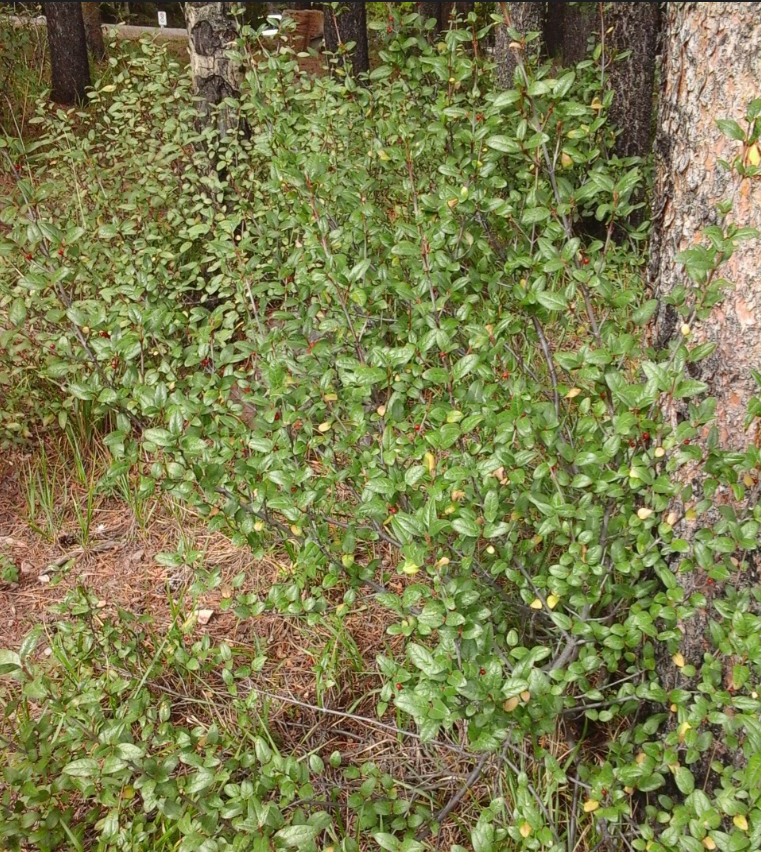
Names: Soapberry is also commonly known as Canadian or Russet Buffaloberry, Rabbitberry, Soopolallie, or Foamberry. Common names refer to how its crushed red berries can be whipped into a foam. In Chinook Jargon “soop” means soap and “ollalie” means berry. Shepherdia is named for John Shepherd,” once a curator of Liverpool Botanic Gardens; canadensis means “of Canada.”
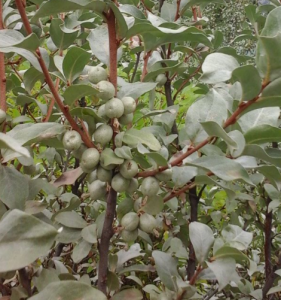
The related species Silverberry, Elaeagnus commutata
Relationships: Several shrubs in this family, such as Oleaster, Elaeagnus angustifolia, are grown ornamentally for their silvery or golden foliage. Silverberry, Elaeagnus commutata, is an inland native, also grown ornamentally. Shepherdia is a genus with only three species native to northern and western North America.

Distribution of Soapberry from USDA Plants Database
Distribution: Soapberry is found throughout most of northern and western North America; all across Canada; from the Arctic Circle to northern Arizona and New Mexico in the west; through the Great Lakes Region and New York and Maine to the east. On the west coast, it is more common inland, but can be found on Vancouver Island, and other smaller islands in British Columbia; the San Juan Islands, and surrounding shores in the Olympic rainshadow. In Oregon, it is mostly limited to the east side of the Cascades; in California, documented specimens have been found in the Shasta-Trinity National Forest.
Growth: Soapberry grows 3-6 feet (1-2m) tall.
Habitat: It grows in dry to moist open woods, often on sandy, rocky, or gravelly soils.
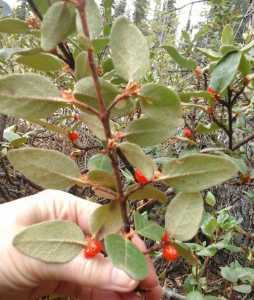 Diagnostic Characters: Leaves are opposite; mostly green on the upper surface, with fuzzy, silvery-white hairs, and rusty brown scales on the undersides. Flowers are small, yellowish-brown, clustered on small branches, often appearing before the leaves; with male and female flowers on separate plants. Fruits are oval, translucent orange-red berries; soapy to the touch when crushed. Stems are covered with brown scales, like Russet Potatoes.
Diagnostic Characters: Leaves are opposite; mostly green on the upper surface, with fuzzy, silvery-white hairs, and rusty brown scales on the undersides. Flowers are small, yellowish-brown, clustered on small branches, often appearing before the leaves; with male and female flowers on separate plants. Fruits are oval, translucent orange-red berries; soapy to the touch when crushed. Stems are covered with brown scales, like Russet Potatoes.
In the Landscape: Soapberry is a good choice for nitrogen-poor sites due to its association with a nitrogen-fixing, filamentous bacteria, (Frankia sp.), which live in its root nodules. This silvery, shrub with its “flocked” appearance could be perfect for a dry, rock garden. Its red berries are attractive in summer.
Phenology: Bloom time: May-June; Fruit ripens: July.
Propagation: Seeds exhibit erratic germination and are susceptible to greenhouse pathogens; they should not be allowed to dry out. Plant seeds immediately in a cold frame in fall, or cold stratify for 60-90 days. Sulfuric acid scarification for 20 to 30 minutes increases germination rates. Vegetative propagation is best accomplished using root cuttings; stem cuttings, reportedly, have been unsuccessful but one source recommends trying half-ripe wood in July or August.
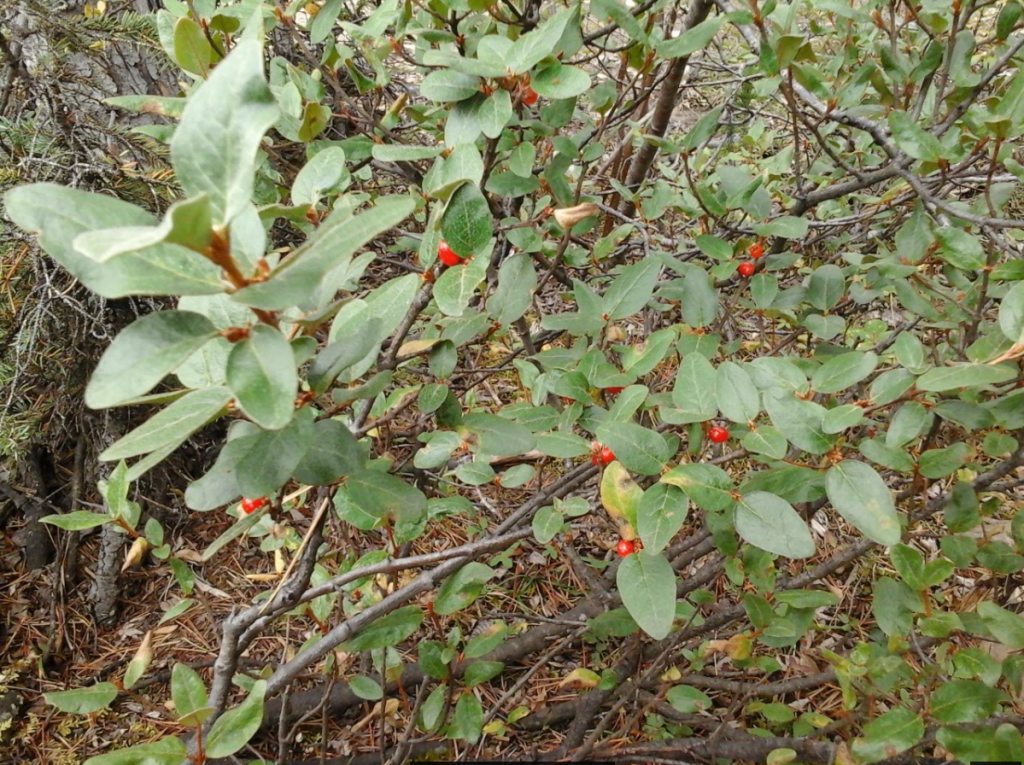
Use by People: The fruit was eaten raw, cooked or dried into cakes. Most report that it is bitter tasting; although some say it is sour and gets sweeter after a frost. The favorite way of preparing the berries is to make “Indian ice cream.” Berries were collected by shaking the bushes over a mat. They were then put in a grease-free container, mixed with an equal amount of water, and whipped until frothy. The foam was then flavored with a sweeter food such as cooked camas, or salal berries. The bittersweet flavor, however, may be an acquired taste. Because of the saponin content, the berries should be consumed in moderation. The berries can also be made into a jelly. After consumption, the berries are thought to provide protection from mosquitoes. Different parts of this plant were also used for various medicinal purposes. A brown liquid made from boiling the branches was used to curl and dye hair.
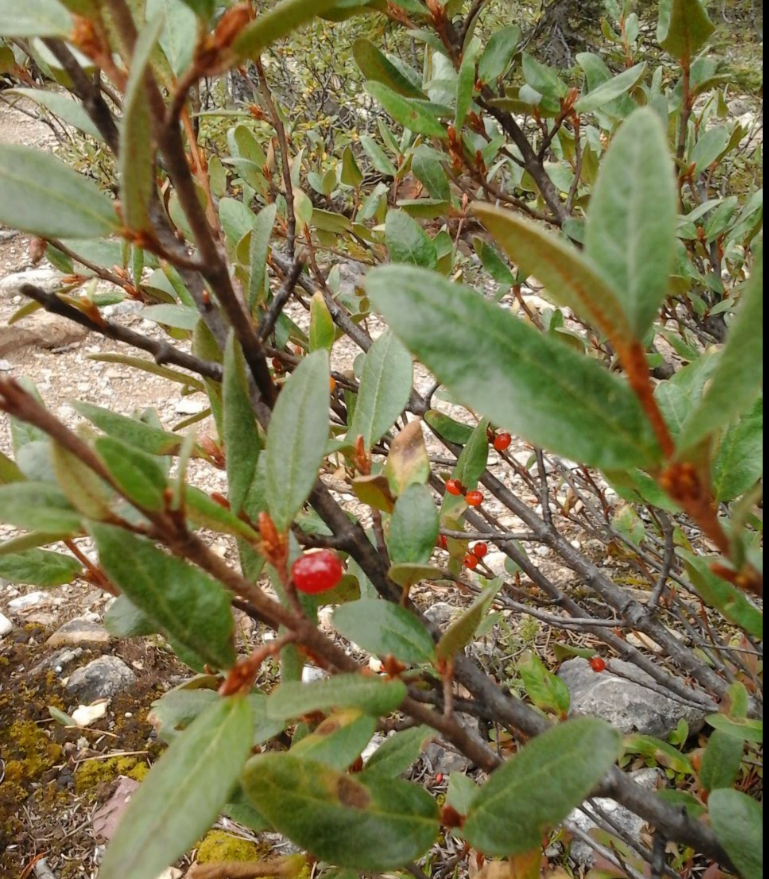
The red, almost translucent, berries are high in saponins and can be whipped into a froth.
Use by wildlife: Soapberry is rarely abundant enough to be very valuable to wildlife. Deer, Elk, and Bighorn Sheep consume the foliage, while bears, Snowshoe Hares, chipmunks, grouse, quail, and Catbirds consume the berries.
Links:
Consortium of Pacific Northwest Herbaria
WTU Herbarium Image Collection, Plants of Washington, Burke Museum
E-Flora BC, Electronic Atlas of the Flora of British Columbia
Jepson Eflora, University of California
Ladybird Johnson Wildflower Center
USDA Forest Service-Fire Effects Information System
Native Plants Network, Propagation Protocol Database
Native American Ethnobotany, University of Michigan, Dearborn
